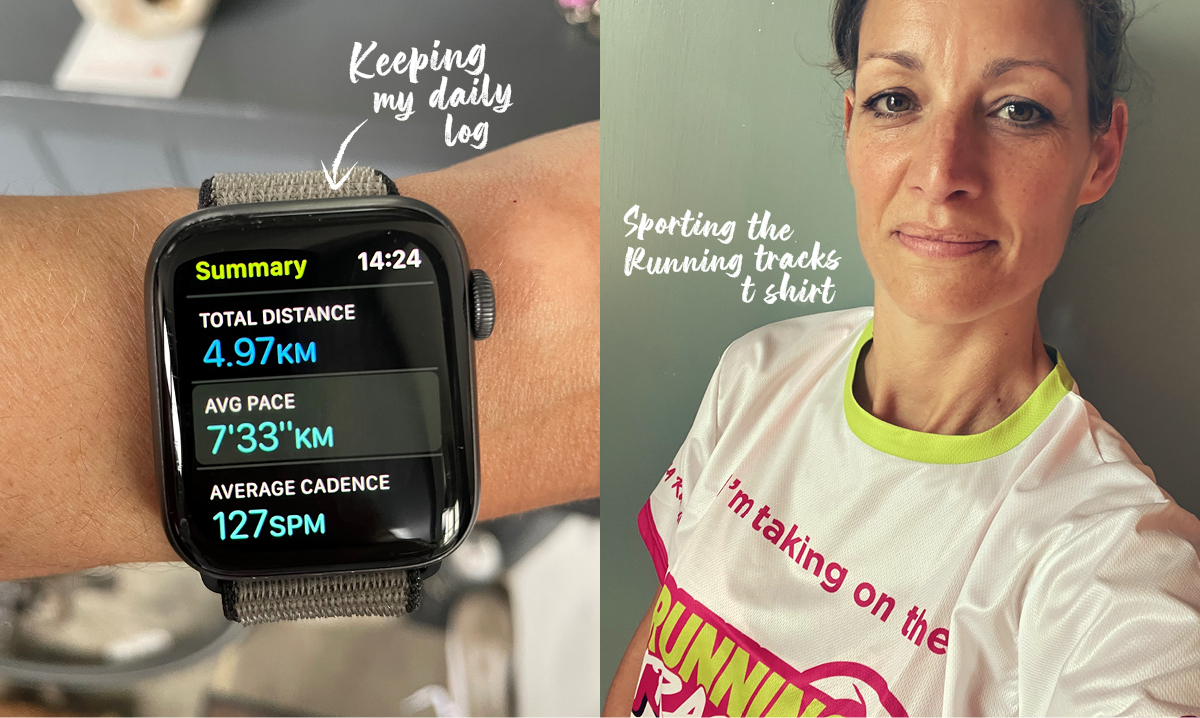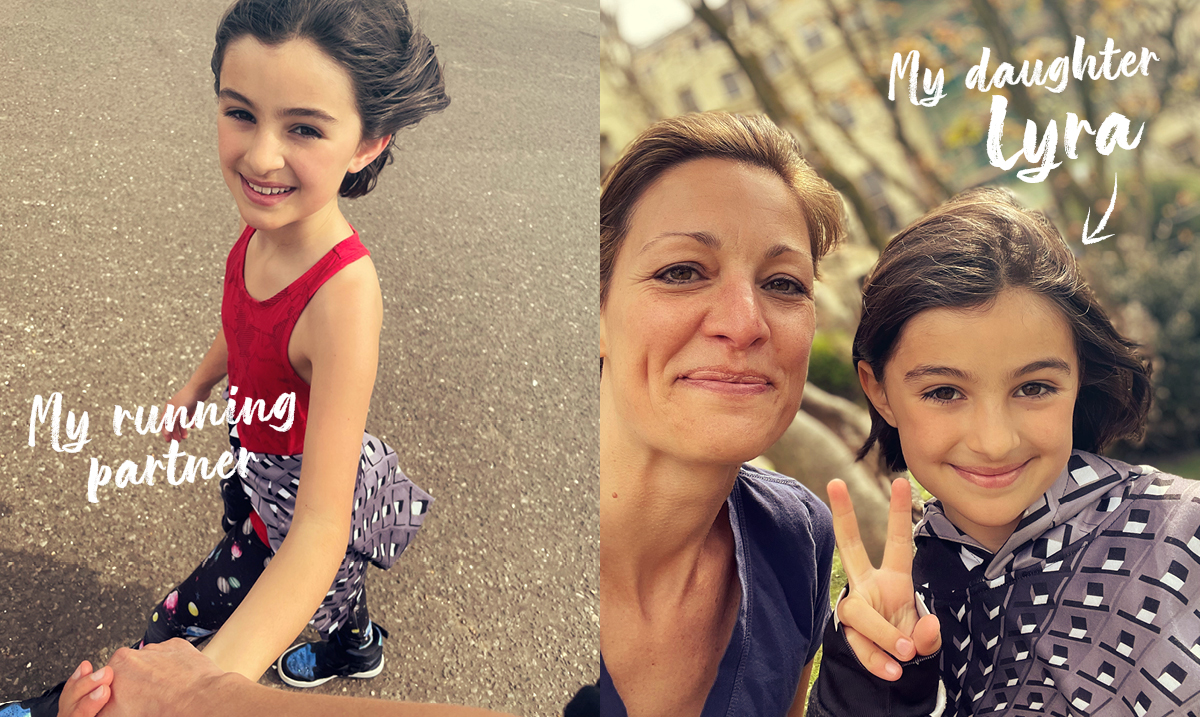Hello from the other side: What I learnt taking part in one of our virtual challenge fundraising events
I used to love organising and taking part in fundraising events, but since I started work in fundraising (14 years ago!!), it felt too much like a busman’s holiday, and I’ve never been a participant in any of the challenge events I’ve been involved with. This has niggled at me for a while, so when The Running Tracks Challenge came along, I knew this was my chance to throw myself out of the ivory tower and actually practise what I preach.
I love the idea of The Running Tracks Challenge – run or walk for the time it takes to listen to a different album each day in May. And not just because I created it! I had NEVER run before, apart from for a few buses, and was intrigued as to how I’d get on. And of course, it’s for an amazing cause; raising money for Coram, who support vulnerable children in many magical ways.
Developing new fundraising products, campaigns and stewardship plans is our thing, but experiencing it from the other side has been inspiring and taught me a few valuable lessons on the way that will help us make the experience even better for supporters.
It was sponsorship that got me out there, rain or shine
It was a really horrible May. It’s been windy, rainy. My work calendar has been full. I’m a busy mum. But the fact that so many friends, family and colleagues sponsored me has driven me to go out and do my best each day. It’s a big responsibility. And I’m delighted to report that nine times out of ten, I’ve had a great time once I’ve got going!
This reinforces the importance of encouraging action that will drive commitment as early as possible in the supporter journey – getting participants to talk to their network about the event and ask for sponsorship being two examples.
But we must also be kind to our participants. The highly engaged fundraising audience are already putting themselves under a lot of pressure – and giving them permission to dial it down some days and allow themselves a bit of slack should be a priority alongside our fundraising goals.
Sharing on social is great!
Despite my job, I’m not a particularly big sharer on social media. But it was different when I did Running Tracks. I wanted to share my achievements and looked forward to people’s comments and likes. It felt integral to my journey and was obviously the easiest way to encourage donations.
But after my first few posts, I ran out of steam. My chosen channels are Insta and Facebook, so I needed a photo each time, and there’s only so many running selfies you can post!
I have started including even more social post ideas for our event participants to encourage this sharing and give them an excuse to ask for more donations: Photo competitions, interesting stats, suggested messages, downloadable graphics and badges, hashtag ideas, milestone targets in fundraising.
This sharing is enhancing the supporter’s journey, encouraging donations and building awareness and positive perception of both the cause and event.

The T-shirt incentive really worked
As part of Running Tracks, if you raise £100 you get an exclusive Running Tracks T-shirt. I really wanted the t-shirt! This prompted me to put a donation in myself when I signed up, plus gave me fuel to post out requests – not least when I was £5 off this target.
Receiving the T-shirt felt like a special moment – I felt rewarded and recognised. I’m also sure more people looked at me when I ran wearing it, so it worked to help promote the event too.
It’s not uncommon for charities to link the T-shirt to a fundraising target, and my personal experience supports this as an excellent win-win approach.
Talk to me
It’s a delicate balance planning how many or few emails to send participants. Through May, I would have happily received more. Taking part was a big thing in my life; every day was planned around me finding time to do my run. I want to feel recognised, motivated, connected, part of something.
Don’t be shy about talking to participants. They have chosen to sign up, so your connection is welcome. And if they are actively participating, you are already dominating their lives! We plan the emails to be a mix of inspiration, ideas, fundraising, reassurance, cause messaging, signposting and sharing, keeping it fresh and engaging.
A daily challenge is a big ask
As mentioned, participation is all-encompassing. Each day needed to be planned around time for the run: With a full-time job, young kid, post-lockdown social life and weather considerations, this was a complex juggle. And the lack of rest days is physically demanding.
Because it was a daily challenge, I didn’t feel I could skip a day and make it up by doing extra the next day.
I would do it again, but I will think carefully about whether a daily target is right for my audience when creating new events in future. Run Your Age, Samarathon, Miles for Refugees, and Swim Marathon all set a monthly target, which offers more flexibility. Running Tracks, Walk for Water, Face the Unknown and Walk All Over Cancer have daily targets, which makes them more challenging but also more structured and motivating each day.

Start line vs finish line
When creating stewardship plans, I put a lot of effort into making the finish line magical. Hard to do with virtual events, but I have a whole armoury of suggestions for participants so they can set up their own special moment.
This is probably very personal, but the start line was a bigger deal for me. It’s the magic moment I’d been anticipating since signing up. It’s the sliding-doors moment when less-engaged registrants choose to take part or opt-out.
I would have welcomed more comms at the start line. Before, during, after. It is reassuring that you are part of a bigger event with virtual companions, motivates taking that first step, and keeps my activity tightly linked to the cause.
There is not one single motivation that made me do it
There was not just one reason for me to take part in the challenge. It was a mix of music, running, responsibility, cause, novelty, doing the right thing, fitness, testing myself.
Some of these I would seek, but others are implicit. If I saw a headline about testing myself, I would scroll on by. But music and running to help vulnerable children – count me in.
This complexity is what makes our job challenging but also enjoyable. Over the years, we’ve honed our view of the target audience and what will appeal to them. Creating different messaging hierarchies for different groups and testing messaging upfront help optimise the campaign and deliver the insights for year-on-year growth.
I’m a convert! What next?
I’m pumped up and want to move on to another challenge next month, but I don’t feel I can ask for sponsorship again so soon.
The opportunity is to plan the long term supporter journey from the start. What could I do next? What would be an exciting and reasonable ask? Maybe a few options for me to choose from. I had plenty of time while running to think and plan my next steps – get me while I’m in the zone.
It may be that the next activity needs a different income model. I wouldn’t feel bad selling cake, donating goods or giving cash next month and doing another sponsored challenge in a few months.
This is the power of a good MPE – it is a great entry point for the acquisition of a new audience and taking them on a journey to ultimately become long-term, regular givers.
Not all great ideas start life with a bang
Taking part reinforced my belief that this is a great fundraiser, but it didn’t fly as high as we wished this year. There were lots of factors that affected the results, all of which will be unpicked and analysed. What I do know is that I love it as a professional and love it as a participant – so we will pump all we have into making it bigger and louder next year.
And just to end with a thank you and well done to Jazmin and Julian at Coram. You were brave and dedicated in taking this to market and a delight to work with.
